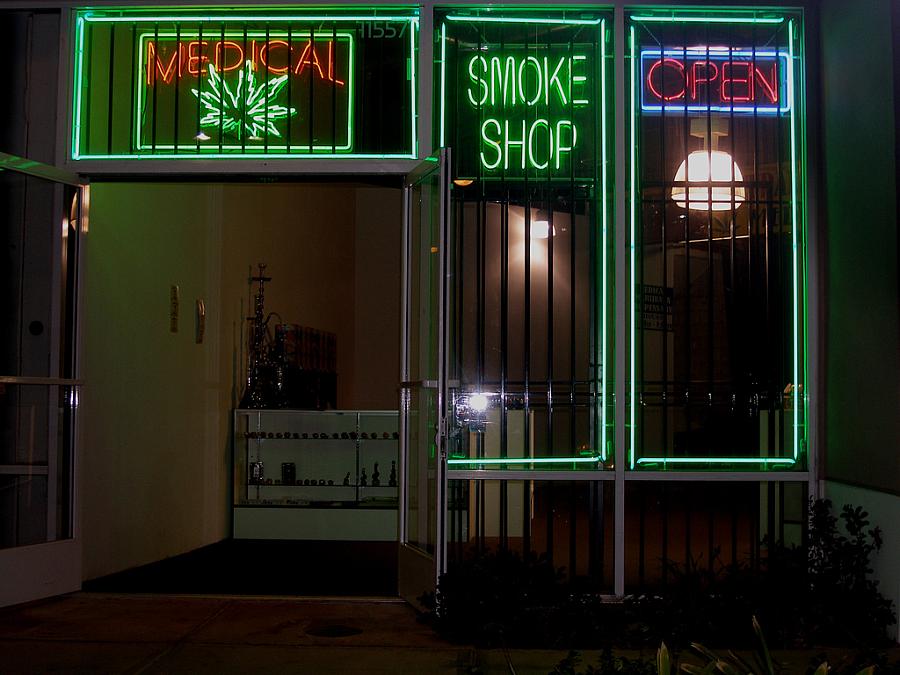"I Can't Believe It's Pot Butter": Q&A with Ron Shinkman on Covering Medical Marijuana

Ron Shinkman has worked many gigs as a health business journalist, but none perhaps as eye-opening as his experience covering the medical marijuana industry in Southern California.
Shinkman, who edits FierceHealthFinance and publishes Payers & Providers, spent a few months knocking on doors of medical marijuana dispensaries for the now-defunct online publication Marijuana Business Reporter.
Here's our recent conversation, which has been edited for length and clarity.
Q: How did you hear about this job?
A: I answered an ad on Craigslist and did the job for about five months. The ultimate goal of the publication was to use articles to weave to weave into a directory of (marijuana) dispensaries. They had reporters in several cities (including) Seattle, Detroit and Denver.
Q: What was your first reporting assignment and what was it like to do this kind of reporting?
A. I was told to go out and do dispensary profiles, and take some photos if they'll let you. I started with a dispensary that's not far from my house – I'd driven it by many times. The Marijuana Business Reporter wanted to get the identities of dispensary operators – many did not want to give me their last names.
You really need to be persistent. You can't make phone calls or emails and expect them to respond. You have to be totally nonjudgmental; this is a group of people who for obvious reasons are fairly secretive and don't want to make things public. There was people who had concerns about their drug (dealing) records in the past. There was always a low-key sort of menace – even though everyone was sort of mellow.
Q: How did you know where to find the dispensaries?
A: The best way is to look at the alt-weeklies – most have ads from dispensaries. There are dispensary publications (at) your supermarket or local fast food restaurant. In the San Fernando Valley, you couldn't drive a mile without running into another dispensary. The one near my house is still operating.
Q: What was your impression of the dispensaries you visited, and did you have any problems being allowed in?
A: For the most part, most of these dispensaries were being run as businesses. They were kept neat, clean, pristine; they looked like a gourmet coffeehouse or spice store. I didn't see anything that vaguely reminded me of a medical clinic – except for a green cross, which is the same symbol used in French pharmacies.
They knew they had to run a good business get people to come in. By law, I wasn't allowed in these dispensaries without a prescription. I identified myself as a reporter. If they didn't let me in, it would become a First Amendment issue. Most clinics are quite security-conscious. A few of them had a sealed-off entrance – they had to buzz you in. They always asked for papers before they let anyone in.
Q: What did you learn from the people you interviewed?
A: I didn't interview doctors (who "prescribe" medical marijuana). I don't think I saw a single physician in any dispensary. The most savvy business person I interviewed was person was the one who told me he he's not a warrior for this culture. He'd sample (marijuana) to see that the product quality was okay, but he was not a habitual user. I found him more focused on earning a profit. He was a graphic design graduate who thought this would be another business to try.
The vast majority of (customers) I saw were men in their twenties who appeared to have no health problems whatsoever. Most were trying free samples – there were tons of "specials." I'm waiting for the Groupon.
Q: What surprised you most during your reporting?
A: The amount of foodstuffs in the dispensaries. The place down the street was selling marijuana-laced baklava. They'd fry marijuana and extract its chemical into an oil, then make it into food. I saw marijuana-laced sodas, brownies, cakes, lollipops. I was told half-a-brownie would get you pretty baked. There was microwave popcorn, laced with marijuana, which was called "I Can't Believe It's Pot Butter. "
The price point is a lot different. They charged $55 for one-eighth of an ounce of marijuana, but $6 or $8 for a brownie that apparently enough to get two people stoned.
Q: Are there stories in this area you think are under-covered?
A: I was interested in the companies that are making the food stuffs. They were so secretive I could not track them down. Some of the stuff obvious goes stale – what happens to it? They can't ship interstate; that violates federal laws. There were tons of operations in LA that make edible food stuffs for dispensaries. I was going to do the story, and then the company stopped publishing Medical Marijuana Reporter.
I'd be interested in how many physicians go into prescribing medical marijuana full-time because they are burnt out from practicing medicine. I also heard that some doctors in the Kaiser Permanente system (in Southern California) were prescribing medical marijuana.
Q: So, does medical marijuana really belong on the health beat?
A: It's not a health story. This is a business story. It's sort of like a business that's not generally accepted by people although there's huge demand for it. It reminds me of the adult entertainment business in a lot of ways.
Related Posts:
Mining California Data for Amazing Healthcare Stories, by Ron Shinkman

